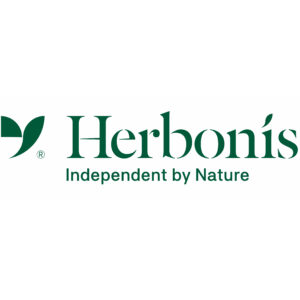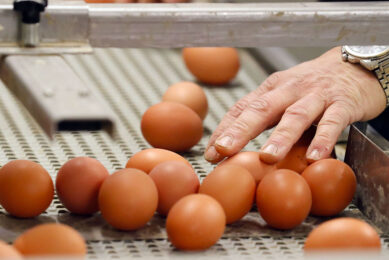Exploring new approaches to reduce breast myopathies in broilers

Fast-growing broilers have an increased risk of developing growth-related myopathies such as wooden breast, white striping and spaghetti meat. A trial was therefore conducted to test the effects of supplementing broiler diets with Solanum glaucophyllum (Panbonis, Herbonis Animal Health) as a source of G-1,25(OH)2D3 on the incidence and severity of breast myopathies.
Muscles affected by wooden breast have areas with hardened and bulging appearance and histology shows signs of fibrosis (replacement of muscle fibres by connective tissue), whereas white striping is characterised by white striations running in parallel to the muscle fibers and lipidosis (fat infiltration). Finally, spaghetti meat is characterised by detached muscle fibres and disruption of the connective tissue.
Breast myopathies are non-infectious pathologies in the breast muscle (mainly the pectoralis major) in broilers. Breast myopathies do not pose a risk for consumer health, but have a negative impact on consumer perception of meat quality. Therefore, they cause significant economic losses due to downgrading of the affected chicken breast fillets or even condemnation of the whole carcass.
The exact etiology of these myopathies is not yet fully understood but reduced vascularisation, increased oxidative stress and inflammation, impaired muscle repair and disturbed mitochondrial metabolism (cellular respiration) are considered the most likely causes. Although the conditions are more prevalent in heavy broilers, early stages can already be observed in broilers at 28 days of age, indicating that high growth rate in combination with high feed efficiency rather than just high final body weight might be contributing factors.
Strategies to reduce the incidence of breast myopathies
Different dietary approaches are used to reduce the incidence of breast myopathies, based on control of body weight gain, antioxidant capacity and cellular energy metabolism. They include reduced lysine content, the use of dietary antioxidants and creatine precursors. A different approach is the use of vitamin D metabolites. Various studies have shown that vitamin D plays an essential role in muscle function, muscle integrity and muscle repair. It alters expression of different muscle genes, increases satellite cell differentiation, which is a key step during muscle regeneration after injury, reduces oxidative pathways and improves mitochondrial physiology (Figure 1).


Vitamin D first needs to be converted to 25-hydroxyvitamin D (25(OH)D3) in the liver and then to 1,25-dihydroxyvitamin D (1,25(OH)2D3) in the kidney. However, the conversion of 25(OH)D3 to 1,25(OH)2D3 can be impaired by mycotoxins as well as metabolic challenges. Moreover, some researchers found a possible inefficiency in physiological regulation of calcium and phosphorus metabolism in modern broiler breeds, which may be related to altered pathways regulating enzymatic activation of vitamin D. Therefore, supplementing broiler diets with a source of 1,25(OH)2D3 on top of commercial vitamin D levels might reduce the incidence of breast myopathies.
New approach with Solanum glaucophyllum
A trial with 630 male Ross 308 broilers was conducted to test the effects of supplementing broiler diets with Solanum glaucophyllum (Sg, as Panbonis, Herbonis Animal Health, Switzerland) as a source of G-1,25(OH)2D3 on the incidence and severity of breast myopathies. Broilers were divided in 2 treatments and fed either a commercial control diet (CON) or CON diet supplemented with 1 µg 1,25(OH)2D3 (Sg) during 47 days. The control diet was a corn soy diet with 4,000 IU/kg of vitamin D. Production performances of broilers at the end of the experiment were similar with an average final body weight of 3.2 ± 0.1 kg and overall FCR of 1.857 ± 0.044.
Birds supplemented with Sg had a significantly reduced incidence of wooden breast and spaghetti meat (p < 0.001). In the Sg group, 54 and 84.3% of the breast fillets were considered normal for wooden breast and spaghetti meat, respectively, compared to 36.3 and 59.2% in the CON group (Figure 2). However, the severity of white striping was not improved in the supplemented group. The reason is currently unclear and might be based in the different etiology of the different myopathies.

Often, breast muscles are affected by more than one myopathy. In the current trial, 50.7% of the breast muscles of the supplemented group did not show any myopathy compared to only 35.3% in the control group. Similarly, there were more breast fillets in the control group showing signs of wooden breast, white striping, and spaghetti meat. To get a better insight on the occurrence and the severity of breast myopathies, a total breast score was calculated. The supplementation of Sg reduced total breast score (Figure 3).

The fact that the severity of breast myopathies in this trial could be reduced without lowering animal performance indicates that 1,25(OH)2D3 might have affected the breast muscle metabolism on a cellular level. The G-1,25(OH)2D3, in combination with the polyphenols of Sg, might have reduced oxidative and inflammatory cellular stress.
Additionally, as mentioned above, vitamin D is involved in processes that ensures proper muscle repair through satellite cells supporting the formation of new muscle cells instead of connective tissue. Sg could also support the functionality of the mitochondria, enabling them to provide sufficient energy to the cells and to efficiently get rid of the oxidative species that are a natural byproduct of the cellular energy cycle.



